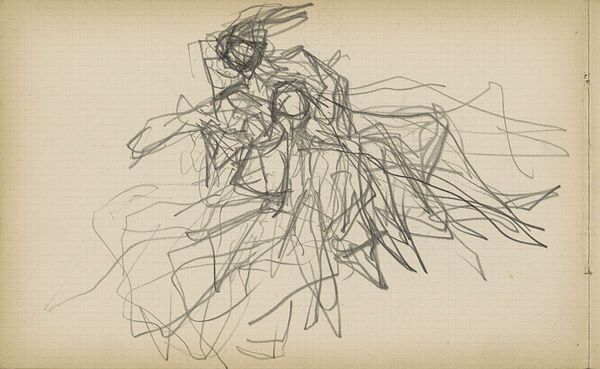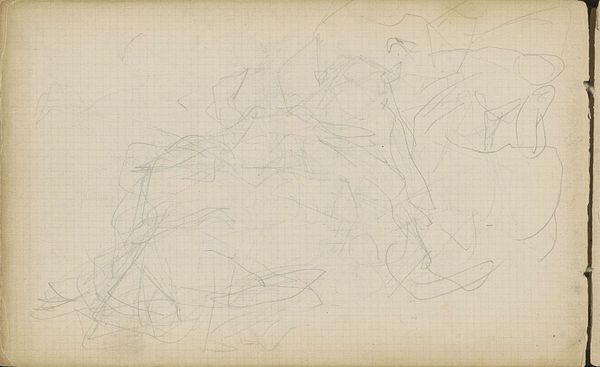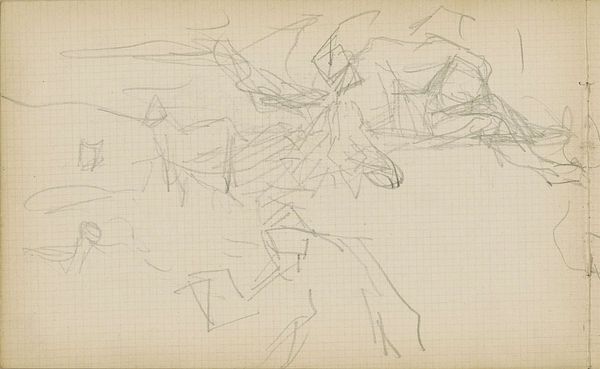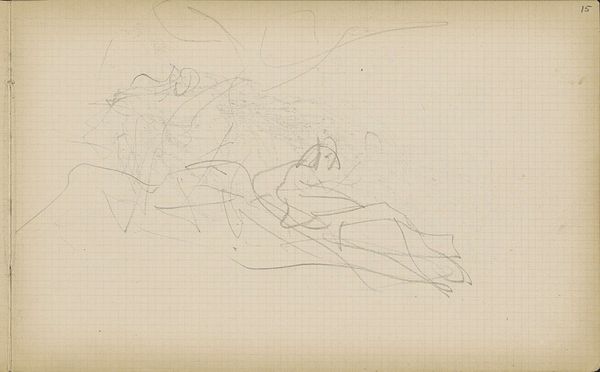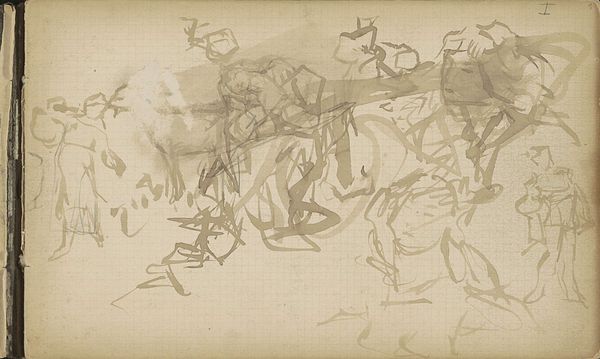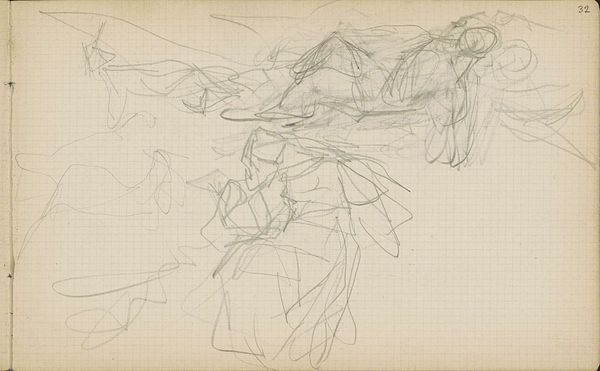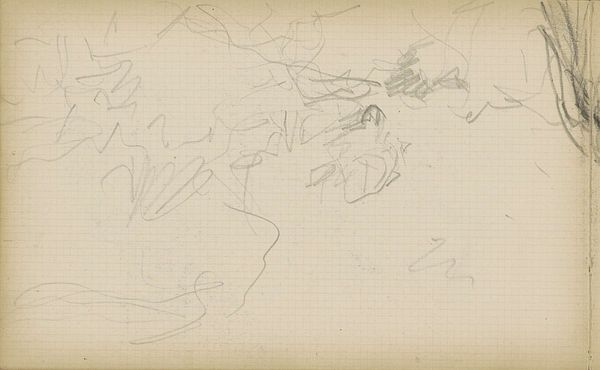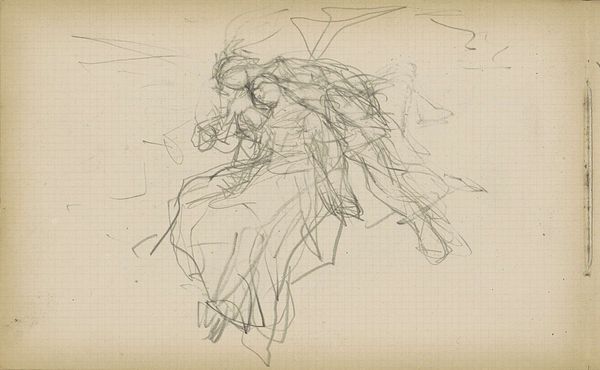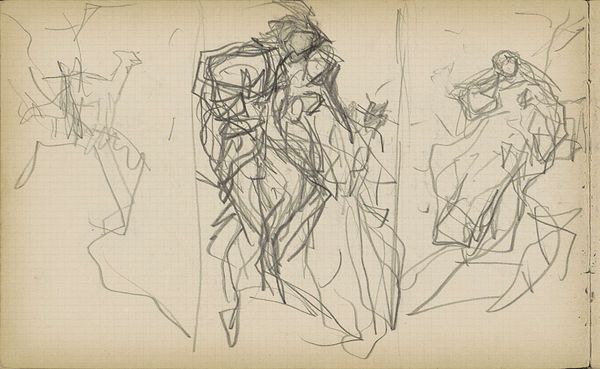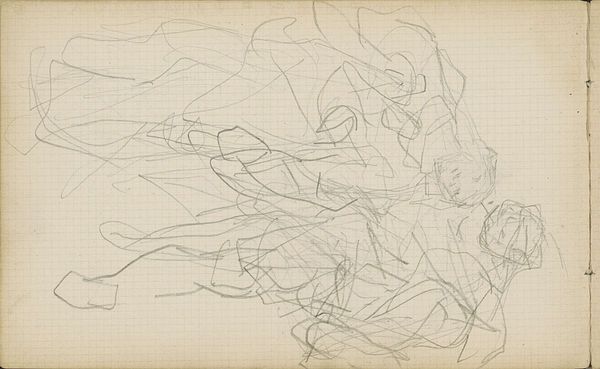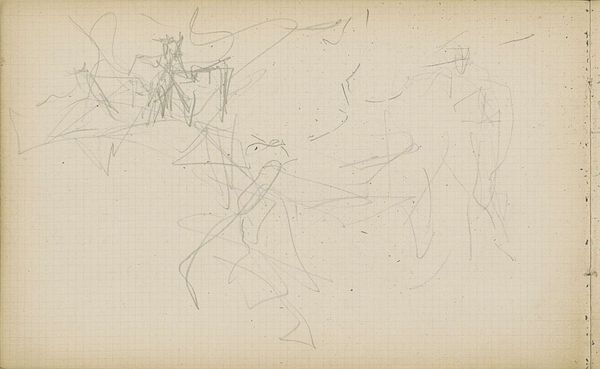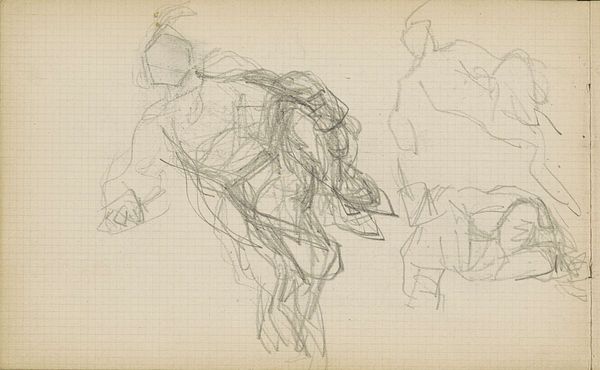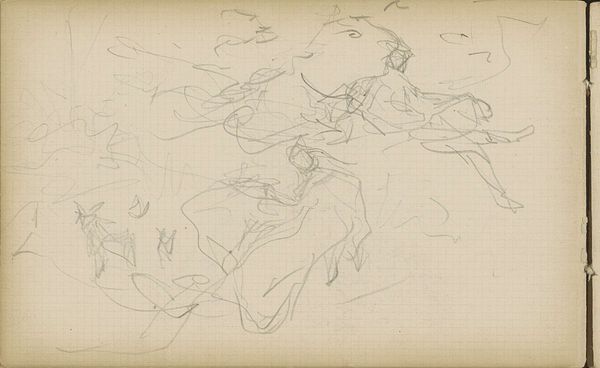
drawing, paper, pencil
#
drawing
#
impressionism
#
figuration
#
paper
#
pencil
#
line
#
academic-art
Dimensions: height 127 mm, width 208 mm
Copyright: Rijks Museum: Open Domain
Curator: I'm immediately struck by the energetic lines in this pencil drawing. It’s a flurry of motion, barely held in check. Editor: Indeed. What we're looking at is titled "Figuurstudie", a figure study by Matthijs Maris, made around 1874 or 1875. It's a pencil drawing on paper, held in the Rijksmuseum collection. Curator: The figure almost dissolves into abstraction. Do you get the sense that he was trying to capture the figure's essence more than its exact likeness? The line work suggests movement and almost a spiritual or ephemeral quality. Editor: Maris was certainly influenced by Impressionism, although some argue his work is distinct. It's interesting to think of how social expectations of academic drawing are subverted by his suggestive approach. This piece reminds us that artistic representation is a social act as well as an act of vision. Curator: There's an element of visual memory here too. Those quick, repeated strokes—aren’t they an attempt to retain the figure as it fades from memory, as it refuses to remain still? It evokes the temporality of human existence. Editor: That interpretation aligns with the rise of individualism in European culture during the period, when many began exploring how identity shapes and is shaped by artistic movements. Perhaps the figure study represents society looking inward for meaning. Curator: Precisely! It reminds me of dreams—fleeting, fragmented, but deeply revealing about the subconscious. Maris seems to grasp something very profound here through such minimal means. Editor: Well, considering its context within the social transformations of the 19th century truly enriches how we relate to "Figuurstudie," going beyond the immediate visual encounter to consider the world surrounding the artwork. Curator: Absolutely, it’s an example of how the visual and the historical combine to unlock layers of meaning we wouldn't discover if approaching it from just one vantage point. Editor: It certainly provides new avenues for analyzing this unique approach to a traditional genre!
Comments
No comments
Be the first to comment and join the conversation on the ultimate creative platform.

